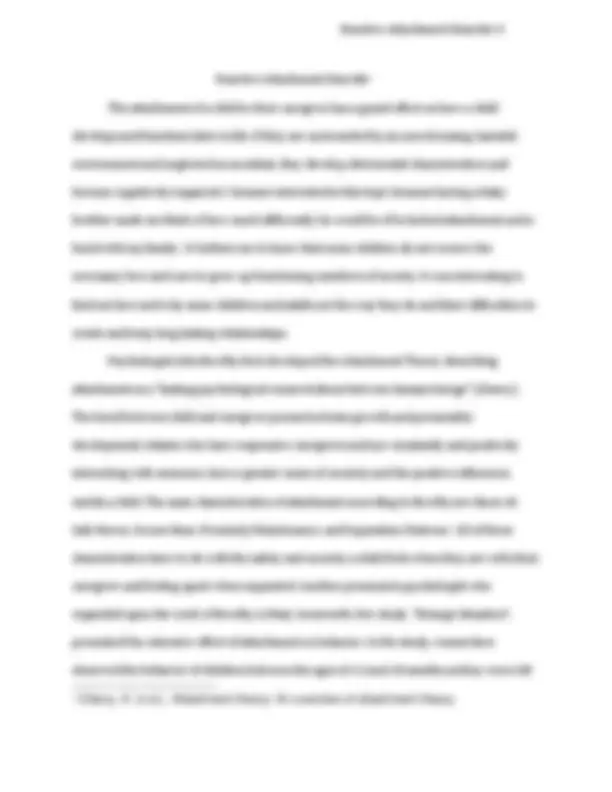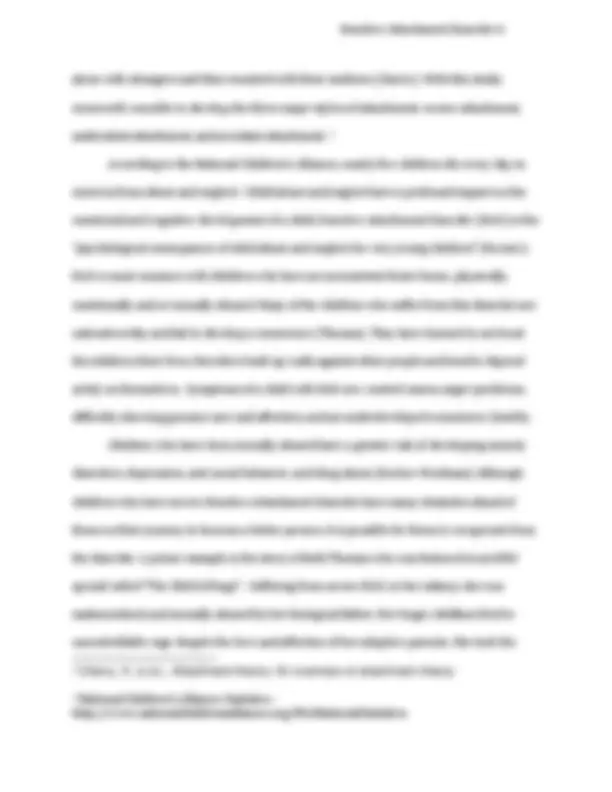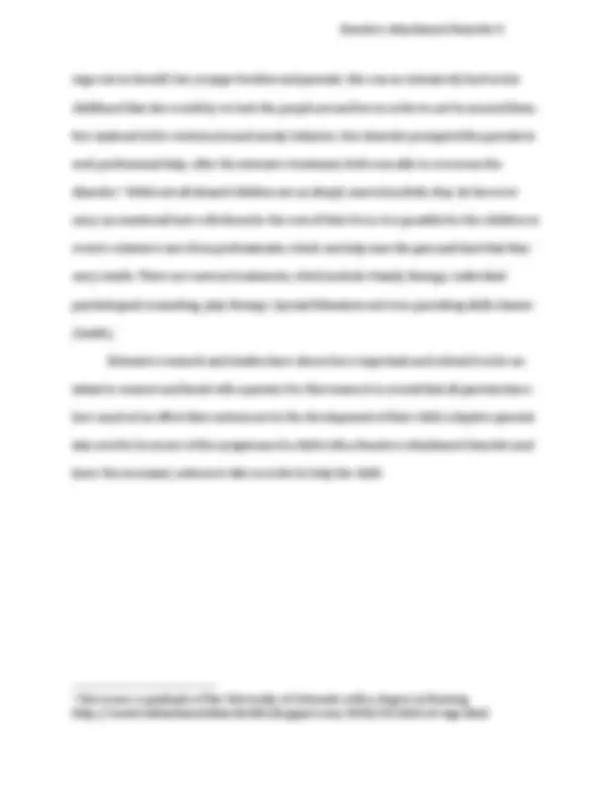





Study with the several resources on Docsity

Earn points by helping other students or get them with a premium plan


Prepare for your exams
Study with the several resources on Docsity

Earn points to download
Earn points by helping other students or get them with a premium plan
Community
Ask the community for help and clear up your study doubts
Discover the best universities in your country according to Docsity users
Free resources
Download our free guides on studying techniques, anxiety management strategies, and thesis advice from Docsity tutors
Reactive Attachment Disorder (RAD), a condition resulting from child abuse and neglect. The paper discusses the attachment theory developed by John Bowlby and Mary Ainsworth, the impact of child abuse on emotional and cognitive development, and the symptoms and treatments of RAD. The document also includes real-life examples and references.
Typology: Schemes and Mind Maps
1 / 6

This page cannot be seen from the preview
Don't miss anything!




Child Abuse and Its Effects on Child Attachment A Look at Reactive Attachment Disorder
Selena Perez PSYC 2308. Professor Martin September 25, 2011
Abstract An infant comes into this world with the need for love and affection from a parent. The parent-infant bond is a critical aspect of a child’s life and the relationship established early on, echoes throughout their lifetime. John Bowlby first developed the Attachment Theory and it has become a pivotal part in comprehending the actions and behavior of dysfunctional children and their hostility. This research paper examines how a destructive and scarring, unhealthy relationship between caregiver and child affects the emotional, social, and cognitive development of a child.
alone with strangers and then reunited with their mothers (Cherry). With this study, Ainsworth was able to develop the three major styles of attachment: secure attachment, ambivalent attachment, and avoidant attachment. 2 According to the National Children’s Alliance, nearly five children die every day in America from abuse and neglect.^3 Child abuse and neglect have a profound impact on the emotional and cognitive development of a child. Reactive Attachment Disorder (RAD) is the “psychological consequence of child abuse and neglect for very young children” (Hornor). RAD is most common with children who have an inconsistent foster home, physically, emotionally and or sexually abused. Many of the children who suffer from this disorder are untrustworthy and fail to develop a conscience (Thomas). They have learned to not trust the adults in their lives, therefore built up walls against other people and tend to depend solely on themselves. Symptoms of a child with RAD are: control issues, anger problems, difficulty showing genuine care and affection, and an underdeveloped conscience (Smith). Children who have been sexually abused have a greater risk of developing anxiety disorders, depression, anti social behavior, and drug abuse (Becker-Weidman) Although children who have severe Reactive Attachment Disorder have many obstacles ahead of them on their journey to become a better person, it is possible for them to recuperate from the disorder. A prime example is the story of Beth Thomas who was featured in an HBO special called “The Child of Rage”. Suffering from severe RAD, in her infancy she was malnourished, and sexually abused by her biological father. Her tragic childhood led to uncontrollable rage despite the love and affection of her adoptive parents. She took the (^2) Cherry, K. (n.d.). Attachment theory: An overview of attachment theory. (^3) National Children’s Alliance Statistics - http://www.nationalchildrensalliance.org/NCANationalStatistics
rage out on herself, her younger brother and parents. She was so extensively hurt in her childhood that she would try to hurt the people around her in order to not be around them. Her mistrust led to violent acts and unruly behavior. Her disorder prompted the parents to seek professional help. After the intensive treatment, Beth was able to overcome the disorder.^4 While not all abused children are as deeply scarred as Beth, they do however carry an emotional hurt with them for the rest of their lives. It is possible for the children to receive extensive care from professionals, which can help ease the pain and hurt that they carry inside. There are various treatments, which include: Family therapy, individual psychological counseling, play therapy, Special Education services, parenting skills classes (Smith). Extensive research and studies have shown how important and critical it is for an infant to connect and bond with a parent. For this reason it is crucial that all parents know how much of an effect their actions are to the development of their child. Adoptive parents also need to be aware of the symptoms of a child with a Reactive Attachment Disorder and know the necessary actions to take in order to help the child.
(^4) She is now a graduate of the University of Colorado with a degree in Nursing http://reactiveattachmentdisorderlife.blogspot.com/2008/03/child-of-rage.html